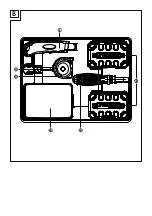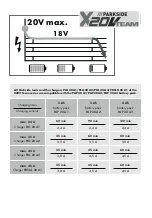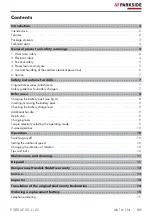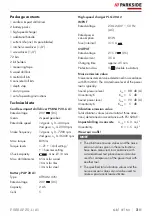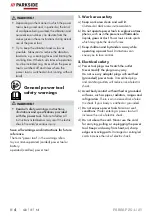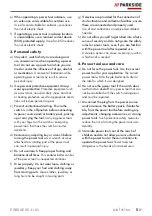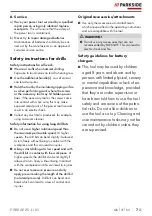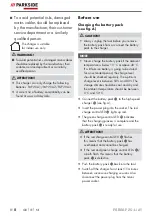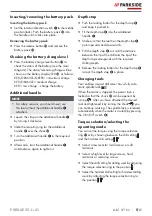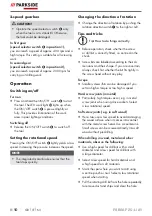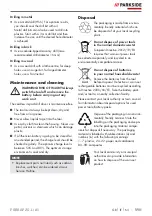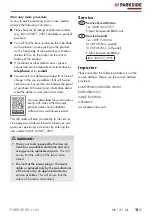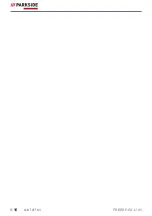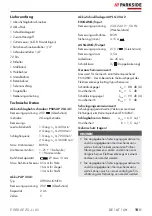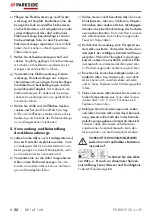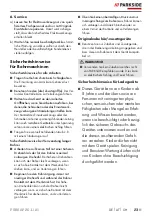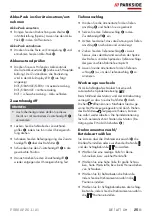
PSBSAP 20-Li A1
GB
│
IE
│
NI
│
11
■
Drilling in metal
♦
Use a metal drill (HSS). For optimum results,
you should cool the drill bit with oil.
Metal drill bits can also be used to drill into
plastics. Start with a 3 mm drill bit and then
increase the size until the desired hole diameter
is achieved.
Drilling in brick
♦
Use a carbide-tipped masonry drill (max.
recommended drill diameter 16 mm).
Drilling in wood
♦
Use a wood drill with a lathe centre; for deep
holes, use an auger bit; for large-diameter
holes, use a Forstner bit.
Maintenance and cleaning
WARNING! RISK OF INJURY! Always
switch the tool off and remove the
battery before carrying out any
work on it.
The cordless impact drill driver is maintenance-free.
■
The tool must always be kept clean, dry and
free from oil or grease.
■
Never allow liquids to get into the tool.
■
Use a dry cloth to clean the housing. Never use
petrol, solvents or cleansers which can damage
plastic.
■
If a lithium-ion battery is going to be stored for
an extended period, the charge level should be
checked regularly. The optimum charge level is
between 50% and 80%. The optimum storage
environment is cool and dry.
NOTE
►
Replacement parts not listed (such as carbon
brushes, switches) can be ordered via our
Service Hotline.
Disposal
The packaging is made from environ-
mentally friendly material which can
be disposed of at your local recycling
plant.
Do not dispose of power tools
in the normal domestic waste!
European Directive 2012/19/EU
requires that worn-out power tools
be collected separately and recycled in an
environmentally compatible manner.
Do not dispose of batteries
in your normal household waste!
Remove the batteries from the tool
before disposal. Defective or worn-out
rechargeable batteries must be recycled according
to Directive 2006/66/EC. Take the battery pack
and/or tool to a nearby collection facility.
Please contact your local authority or town council
for information about disposal options for used
power tools/battery packs.
Dispose of the packaging in an environ-
mentally friendly manner. Note the
labelling on the packaging and sepa-
rate the packaging material compo-
nents for disposal if necessary. The packaging
material is labelled with abbreviations (a) and
numbers (b) with the following meanings:
1–7: plastics, 20–22: paper and cardboard,
80–98: composites.
Your local community or municipal
authorities can provide information
on how to dispose of the worn-out
product.
IB_329697_PSBSAP20-LiA1_LB6.indb 11
26.08.20 17:08
Summary of Contents for 329697 2001
Page 3: ...A...
Page 4: ...B...
Page 21: ...PSBSAP 20 Li A1 16 GB IE NI...
Page 37: ...PSBSAP 20 Li A1 32 DE AT CH...



